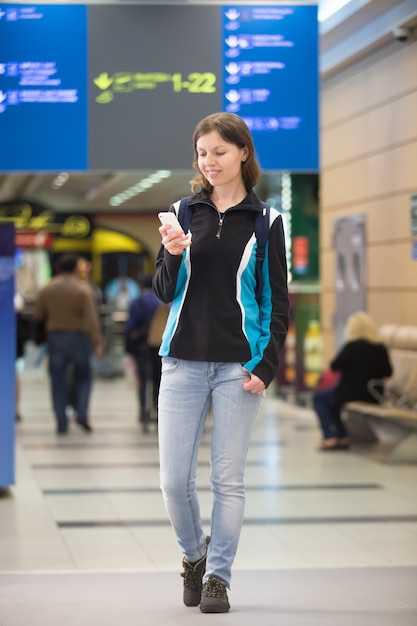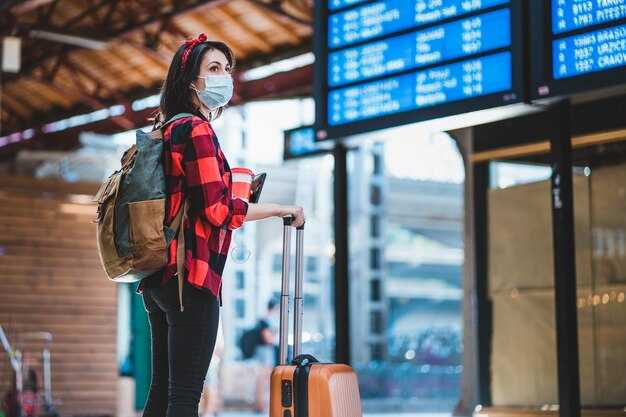
Recommendation: Build a 2-hour buffer for domestic departures and 3 hours for international trips at YYZ to ensure a smooth start. For budget-conscious travelers, this approach often saves stress and reduces the risk of missing a flight during peak periods.
In this section, you’ll explore the airport’s layout and the core procedures. Toronto Pearson operates with two main terminals: Terminal 1 and Terminal 3, both offering landside check-in and airside departures. You’ll find most international flights in Terminal 1, while Terminal 3 covers a broad mix of carriers and services.
Dining and services span many venues, including outlets with salads and other light bites. In both terminals, you’ll find larger food courts near gate areas and smaller kiosks along corridors. To keep costs predictable, look for salads and bowls at counter-service outlets, with price ranges typically under $12 and daily deals at some locations.
Procedures and security run more smoothly when you prepare. Have your boarding pass and ID ready for entry checks, and store liquids in 100ml containers in a clear bag for security screening. Vaping is prohibited inside all terminals; use designated outdoor areas if needed. To speed up securing your seat and catching a gate, use airline apps for real-time updates and keep your bag organized to reduce backtracking and delays.
Distances inside YYZ can feel like miles, especially if you’re moving between terminals or gates. Use the Terminal Link or shuttles to minimize walking, and follow clear signage for baggage claim, check-in, and arrivals. For city connections, the UP Express runs from Pearson to Union Station in about 25 minutes, with trains every 15 minutes at peak times. This option provides a reliable, budget-friendly link between the airport and downtown, helping you manage the rate of changes to your travel plan and keep on time for your connection.
Arriving at YYZ: Accessible Parking, curbside drop-off, and terminal access
Choose curbside drop-off at Terminal 1 or Terminal 3 forecourts and park in nearby accessible spaces to enter the terminal with minimal walking.
YYZ offers accessible parking spaces in each terminal garage, close to baggage claim and the arrivals area. Look for blue-and-white accessibility signage along the curb, and use the elevator or ramp to reach the arrivals level. If you travel with a mobility device, ask at the information desk for assistance and for the closest loading zones. Selecting the closest available spot reduces distance and helps you move through the process without extra fatigue. This facility provides seating, accessible washrooms, and clear routes to aid navigating your day. Without rushing, you can enter calmly and follow these steps to begin your trip smoothly.
During holiday peaks, curbside drop-off lines can form; arriving earlier helps ensure you reach the gate without delay. Create your plan based on your flight time, and have a backup route to the nearest garage if the primary lane is congested.
Parking and curbside drop-off strategies
- Selecting the closest accessible space on the garage level near baggage claim minimizes walking along the curbside route.
- Arrive early during holiday travel to avoid long lines at drop-off and to maintain a smooth start to your trip.
- Follow the airport procedures for curbside drop-off and park only in designated zones to keep traffic moving for other passengers.
- When loading and unloading with luggage, keep your passengers close to the door to avoid crossing traffic along the curb.
- Ask staff for assistance if you need a temporary escort from the drop-off area to the terminal entrance.
Terminal access and navigating the facility
The Terminal Link connects Terminal 1 and Terminal 3 and provides a fast option to reach your connecting gates without leaving security. Enter via the main doors, then follow signs along the corridor to security or to the connecting transit area if you need to switch terminals. These signs guide passengers along moving walkways and accessible routes that are designed for everyone, including passengers with mobility needs or those traveling with children. This airport connects with these pathways to support smooth transitions between arrivals and departures for trips and transfers.
Inside the terminal, you will find food counters serving quick meals, including salads, with options labeled for different dietary preferences. Food and beverage areas line the arrivals zone and are designed to be easy to reach along the main concourses. For british passengers or anyone with dietary accommodations, staff can guide you to seating near the food court and label allergen-friendly items. If you travel with accessories like portable chargers or adapters, keep them within reach as you navigate from the curb to the gate. The facility includes accessible entrances, restrooms, and seating along each concourse to support your comfort during this leg of your trip.
Wheelchair Assistance: How to request help and what to expect at Terminals 1 and 3
Request assistance before you travel: contact your airline during check-in or use YYZ’s Passenger Accessibility link to arrange wheelchair support for Terminal 1 or Terminal 3. Provide your flight number, terminal, gate (if known), departure and arrival times, and the number of bags, plus any mobility needs. This is advisable to ensure a pickup at the curb or arrivals area and to arrange a dedicated escort if needed. YYZ provides this service as a practical solution for travelers and supports a million passengers each year.
When you arrive, a trained agent meets you at the designated pickup point and helps you through security, to the gate, or to the Terminal Link between areas. The service is discreet, efficient, and convenient, making transitions easier while you focus on your plans. In Terminals 1 and 3 you’ll move through large, spacious concourses with enhanced accessibility features, clear signage, and friendly staff who understand long-term travel needs. Among the facilities you’ll encounter are shops, restaurants, wine stores in duty-free areas, magazines, and a wide range of services to support travelers. This unique approach remains a trusted solution for businesses and travelers alike and has supported travelers for years. If you prefer, you can request a direct escort to your gate and even treat yourself to a quick coffee or snack during a longer connection.
Tips to prepare: keep bags organized and within carry-on limits to speed handling; carry a valid photo ID and your flight details; if you use a mobility device, inform the agent so they arrange appropriate transport. Arrive two hours before domestic departures and three hours before international ones to allow time for check-in and security. If you connect via trains between areas, the escort can accompany you; the Terminal Link offers a convenient way to move between terminals. In between gates, you can pause in convenient areas, explore shops, grab a bite at restaurants, and browse magazines or wine shops. The goal is a smooth, dignified experience that feels natural, with enhanced service across the western terminals designed for a million passengers and a positive traveler experience. Link to the booking form is provided by your airline or the YYZ accessibility page, and it’s advisable to book early to secure the arrangement.
Wayfinding and Mobility: Signage, maps, and wheelchair-friendly routes through security to gates
Begin at the information desk to grab a printed map or open the Pearson mobile app and load a live map. Choose a wheelchair-friendly route that stays on flat, wide corridors from security to your gate, creating a smoother trip.
Signage uses high-contrast colors, large fonts, and tactile features. Look for paired signage near intersections that point to accessibility services, mamava lactation pods, and the closest elevators. The signs are readily readable and updated through the app, with accessible pathways clearly labeled. Signage also marks temporary closures and queue routes to avoid unexpected delays during screening.
Maps are available at kiosks in terminals A, B, and C and in the mobile app. They show gate locations, departures, counters, and the nearest lifts and ramps. For wheelchair users, the routes stay away from stairs and maintain consistent width to minimize confusion and delays.
mamava pods provide privacy for nursing parents, with locations shown on maps and signs. Access can be arranged via reservations through guest services or the app. Ontario-based accommodations for mobility include extra-wide seating, quiet zones, and extended wait areas near departures.
Vaping signage marks prohibited zones and directs travelers to outdoor areas. Signage graphics feature crown motifs and admiral-style icons to aid quick recognition. The value of clear wayfinding lies in reducing confusion and stress, while audible announcements and large-print text support non-readers. A dedicated offer page lists massages and spa services, with prices posted at desks. For assistance, staff can coordinate with paired support options, from wheelchair escorts to pre-boarding help. Millions of travelers pass through Toronto Pearson annually, and a unique, well-coordinated system helps keep departures on time and comfortable.
Facilities and Restrooms: Accessible washrooms, family spaces, lactation rooms, and quiet areas
To minimize walking and preserve comfort, head to the accessible washrooms near the central information desks on the departures level, along the walkway that connects security to the gates, where you can reach facilities effectively for travelers.
Inside these units you’ll find wider stalls, lower sinks, grab bars, automatic doors, and baby-changing tables. Clear signage and regular cleaning keep the spaces reliable; the structures are designed to simplify navigation and reduce neck strain during transfers. These provisions support a diverse mix of travelers, including those on a budget, and reflect the metropolitan hub’s commitment to accessible service.
In Terminal 1 and Terminal 3, accessible washrooms are distributed across concourses and close to transfer points. Lynn and Kitts from guest services can point you to the nearest unit, especially during peak periods when the market of offerings around terminals becomes lively. The aim is to keep you informed and comfortable, wherever you’re headed.
Family spaces and lactation rooms
Family spaces sit near the main food court and along transfer corridors, providing seating for groups, space for strollers, and nearby changing tables. Lactation rooms are near information desks and staff corridors, with lockable doors, comfortable seating, a small table, and outlets for powering pumps. These areas are easy to reach and quick to use, and they offer a unique blend of privacy and practicality to support longer stays without delaying your travel. For a smooth transfer between terminals, these zones are strategically placed to ease movement around the terminal campus.
Quiet areas and additional notes

Quiet areas offer screens-free zones with low lighting and soft seating where you can recharge between flights. Some lounges feature televisions for light entertainment, but the quiet spaces remain calm and focused. When planning a layover, strategically choosing these areas helps travelers reset before a transfer around the terminals, and the market of campus offerings supports millions of travelers annually. The offerings include diverse cuisine options with clear labeling, including salt content, so you can pick choices that fit your needs.
Communication Support: TTY, induction loops, Braille signage, and visual alerts
Next to on-site information desks in the east concourses of Terminal 1 and Terminal 3, TTY stations connect you to operators for text chats, booking details, and health-related queries while travelling conveniently.
Induction loops ring check-in counters, security checkpoints, and gate areas, enabling clear announcements for users with hearing devices.
Braille signage is installed on elevators, restrooms, and wayfinding panels throughout the airport. YYZ states that TTY and Braille signage are available across terminals, including east concourses.
Visual alerts feed captions on displays and color-coded indicators in arrivals, departures, and transfer zones, so passengers can follow updates even in noisy spaces. The systems are designed to stay reliable in busy hubs.
On-site support and offerings: Crawford sundry accessibility aids and enhanced signage are available at service desks; there are lots of market areas and retail outlets nearby with salads and other items, giving visitors choices for chargers and health items. Visitors and passengers can request assistance at the Crawford centre; sundry items like portable chargers are available.
| Service | Location | Access | Notes |
|---|---|---|---|
| TTY | East concourses, Terminal 1 & Terminal 3 information desks | 24/7, free | Text chat with operators; supports booking details and health inquiries |
| Induction loops | Check-in counters, security checkpoints, gate areas | Active during hours of operation | Works with hearing aids; staff can help adjust loop volume |
| Braille signage | Elevators, restrooms, wayfinding panels | Continual | Raised characters; high-contrast colors |
| Visual alerts | Displays in arrivals/departures, transfer areas | On-site | LED boards; subtitles on announcements when available |
Service Animals: Entry rules, relief areas, and travel comfort for service animals

Present your service animal’s designation at security and check-in, and keep the animal wearing a harness or on a short leash at all times in YYZ terminals.
Entry rules
- Show the service animal’s credentials if asked by staff during security screening.
- Keep the animal under control with a harness or leash; do not leave the animal unattended in lines or seating areas.
- Have health or designation documentation ready from a recognized program if requested.
Relief areas and care
- Use the designated relief zones within each terminal; signage will guide you to a space with waste bags and seating nearby.
- When in the relief area, keep the animal close with a short leash and clean up after your animal using provided bags. If needed, carry a small food item for energy, and water for hydration.
- Carry a compact water bowl to use in the relief zone or between screening steps.
Travel comfort reminders: a stress-free environment helps both you and the animal. Keep a routine when possible, bring a familiar item for reassurance, and plan for longer waits by locating relief areas near your gates. Check with your airline for guidelines that may differ by terminal, and ask staff for assistance to move smoothly between check-in, security, and the gate.


Comments